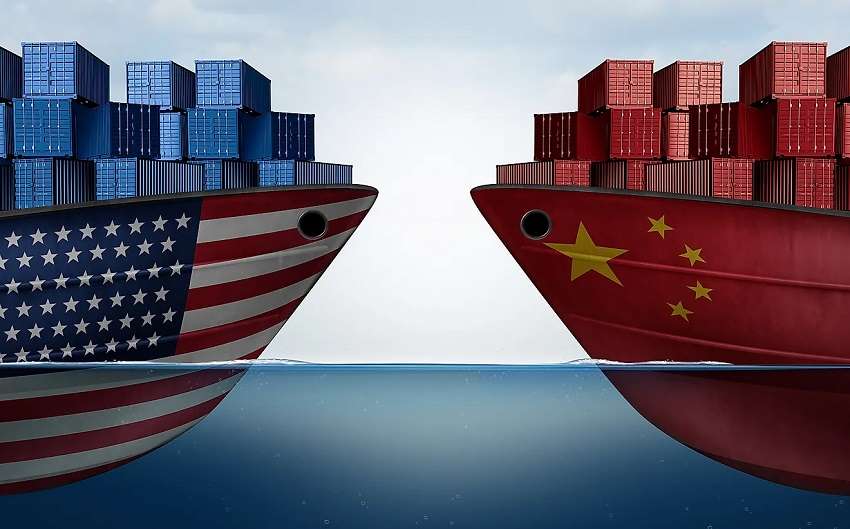FW
Myanmar’s currency kyat has been witnessing a constant fall against the US dollar, which is making a negative impact not only on the country’s domestic market but even export oriented businesses. The currency has fallen by more than 25 per cent against to the dollar this year to 1,300 kyat on Tuesday this week, its weakest. In the unofficial market, the rate reached up to 1,315 kyat.
The players have called for immediate measures to control further fall. Since the US dollar prices are rising, traders are not able to import as much quantities they ordered before, leading to rise in the local prices. Experts point out that the Ministry of Commerce, the central bank, Myanmar Investment Commission and the Ministry of Finance have to take instant action to tackle this issue.
While weakening of kyat against the dollar should help exporters like farmers, since the country depends upon imports of farming machinery and fertilisers, they are not able to benefit. Export volumes were already impacted by the nationwide flooding earlier this year. Since most of the raw material required is imported, Myanmar is not able to control the production cost resulting in the rise of final product price. The only materials produced domestically are cotton balls and high-density poly- ethylene bags, which are also made from imported materials.
In late June, the Central Bank of Myanmar increased the volume of US dollars it sells to the market in its daily auctions. A new reserve requirement ratio is expected to be implemented in local banks by January. The central bank is also working with organisations including the International Monetary Fund, the World Bank, the Asian Development Bank and the Japan International Cooperation Agency to find a way out.
The COSATU-affiliated Southern Africa Clothing and Textile Workers Union (SACTWU) has called for the clothing industry to submit a report on actions taken to implement the commitments made under the Youth Employment Accord (YEA).
The decision was taken after recently concluded COSATU Congress decided that the federation’s affiliates must step up the fight against youth unemployment. SACTWU tabled the matter at the final executive meeting of the Clothing Industry Bargaining Council, held in Cape Town. It was agreed that by February next year, a report would be prepared to take further a call. The report is expected to indicate what the trade union and employers in the industry have respectively done to implement the commitments made in the YEA.
The YEA was signed on April 18, 2013, at the historic Hector Pieterson Memorial in Soweto, by representatives of government and social partners. SACTWU is of the view that instead of just complaining about the problem of youth unemployment, it is time that every signatory of the YEA must take accountability for what they have done to meet their commitments.
Sactwu.org.za
Karnataka Rajya Raitha Sangha (KRRS) has asked the state government to make sure that Bt cotton companies aptly compensate farmers whose crops were destroyed by corn earworm across the state. Addressing a media conference, state president of the organisation Chamarasa Malipatil said that nearly half of the Bt cotton crop was destroyed due to the Helicoverpa pest.
“At the time of introducing Bt cotton in India a few years ago, there was a big propaganda that it was pest-resistance. Now, we find that the genetically modified organism, Bt cotton, is vulnerable to corn earworm. A vast majority of cotton growers cultivated Bt cotton this time and over 50 per cent of cultivated Bt cotton of all brands have now been destroyed by the pest attack. The seed companies that sold Bt cotton seeds to farmers are liable to pay compensation and the government should ensure that they do,” he said.
He also informed that Bt cotton fields in Andhra Pradesh were also destroyed by the corn earworm, suspecting sub-standard supply of seeds by the seed companies. Malipatil further said that no officials of the Department of Agriculture or the agricultural scientists from the University of Agricultural Sciences, Raichur visited the Bt cotton fields hit by the corn earworm to take stock of the situation. Talking about the power shortage, he also warned that his organisation would direct farmers to take power from Niranthara Jyothi villages to their pumpsets, if the government doesn’t act upon the issue immediately.
English Fine Cottons, a trading arm of Tameside-based engineering textiles manufacturer Culimeta-Saveguard, is investing £4.8million to bring cotton spinning back to the UK.
The company has already placed orders for installation of required equipment as well as begun recruiting staff with an aim to restart cotton spinning in the UK by mid- 2016. English Fine Cottons will base its new production facility in the refurbished Tower Mill at Dukinfield in Tameside. The company will spin some of the most luxurious yarn in the world using the finest raw materials from Barbados, India, USA and Egypt. The yarn will be used to create high-end fashion collections both domestically and globally.
More than 100 new jobs are expected to be created by the project. According to Andy Ogden, General Manager of English Fine Cotton's parent company Culimeta-Saveguard, , there is a strong demand across the world for luxury goods with the 'Made in Britain' stamp, and English Fine Cottons has the pedigree for the job. Our roots are in technical textile manufacturing and we are in the perfect location – able to draw on a local workforce with the necessary skills and expertise.”
Hemp, Inc has become the newest member of one of the most proactive organisations in the industrial hemp industry, the National Hemp Association. As a gold member, Hemp, Inc. will be able to reach more hemp businesses with multi-channel exposure.
The National Hemp Association (NHA) is a mission-driven, non-profit organisation dedicated to the re-birth of industrial hemp in America which helps connect farmers, processors, manufactures, researchers, investors and policy makers to accelerate the growth of this important industry in the United States.
NHA has also launched a Federal Campaign on Veteran's Day on November 11, 2015 to legalise industrial hemp on a federal level. An American hemp flag, made of industrial hemp grown in Kentucky, was flown over Washington, DC to celebrate the versatile crop, while drawing attention to how hemp can provide a significant source of jobs for veterans and rural farming families.
According to the NHA's press release released November 9, 2015, “Once considered America's most important cash crop, hemp seeds today cannot be transported across state lines and hemp farmers cannot obtain bank accounts or get crop insurance. Industrial hemp is legal in 30 countries around the world. In the US, industrial hemp is classified as a schedule 1 controlled substance (along with narcotics such as heroin and LSD). Advocates hope to restore the industrial hemp industry through passage of the Industrial Hemp Farming Act of 2015, which will legally define the difference between hemp and marijuana and will remove hemp from the Controlled Substances Act.
” Hemp, Inc recently entered into a definitive five-year term agreement to sell its industrial hemp fibre from its decortication plant in North Carolina to Hemp Blue which will purchase the raw hemp fibre for the production of its hemp denim fabric and manufacture their hemp denim apparel line in the United States all from hemp grown in the United States.
Hempinc.com
Nationalhempassociation.org
"With consumption slowing down, world cotton imports are forecast to decline by 3 per cent to 7.4 million tons in 2015-16, which would constitute the fourth consecutive season in which import volume declined after peaking at 9.8 million tons in 2011-12. China’s imports are expected to shrink by 33 per cent to 1.2 million tons. Imports by Vietnam during the first two months of 2015-16 are up 63 per cent from the same period last season and may reach 1.1 million tons by the end season."
"World cotton production is forecast to fall by 12per cent to 23.1 million tons, which is 1.3 million tons lower than projected demand in 2015-16. Decreases are expected in all five top producing countries."

China lowers imports, countries focus on domestic markets

The report states that despite optimism from the narrowing gap between polyester prices and cotton prices at the start of 2014-15 and falling domestic cotton prices, cotton consumption in China remained unchanged from 2013-14 at 7.5 million tons. With the latest revision, mill use in China is now forecast at 7.3 million tons in 2015-16. As China’s spinning sector continues to decline, mill use in Asia has grown.
India, the world’s second largest consumer of cotton lint may see mill use rise by 3 per cent to reach 5.5 million tons in 2015-16. Pakistan, which had in previous years benefited from the growing demand for cotton yarn in China, is expected to see mill use decrease this season by 10 per cent to 2.2 million tons. In addition to reduced demand from China, factors like an ongoing energy crisis, high energy costs, and high taxes that greatly add to the cost of production have caused many mills to reduce operations, and in some cases to shut down entirely.
Turkey’s consumption is projected to increase by 5 per cent to 1.4 million tons, due in part to expanding private consumption in the EU and political after its most recent elections. Lower production costs and favourable government policies for the textile sectors in Bangladesh and Vietnam will encourage consumption growth in these countries. Mill use in Bangladesh is forecast to rise by 10 per cent to just over 1 million tons while in Vietnam, by 20 per cent to 1.1 million tons.
With consumption slowing down, world cotton imports are forecast to decline by 3 per cent to 7.4 million tons in 2015-16, which would constitute the fourth consecutive season in which import volume declined after peaking at 9.8 million tons in 2011-12. China’s imports are expected to shrink by 33 per cent to 1.2 million tons. Imports by Vietnam during the first two months of 2015-16 are up 63 per cent from the same period last season and may reach 1.1 million tons by the end season.
Production dips in major producing countries
World cotton production is forecast to fall by 12per cent to 23.1 million tons, which is 1.3 million tons lower than projected demand in 2015-16. Decreases are expected in all five top producing countries.
India’s production may decrease by 4 per cent to 6.3 million tons due to reduced plantings and pest problems. China is in its fourth consecutive season of declining production, and its volume in 2015-16 is projected down 19 per cent to 5.3 million tons. In the United States, a 13 per cent reduction in harvested area and lower yields are expected to cause production to fall by 18 per cent to 2.9 million tons.
Pakistan’s production is forecast to touch around 1.9 million tons in 2015-16 while in Brazil, it is projected to decease by 6 per cent to 1.5 million tons. World ending stocks are expected to fall by 6 per cent to 20.7 million tons, which represents about 85 per cent of the volume needed for world mill use in 2015/16. Stocks in China are projected to be just under 12 million tons at the end of 2015/16, while stocks outside of China are forecast down by 4 per cent to 8.7 million tons.
www.icac.org
Kenya’s apparel industry is small, with an estimated 30,000 workers, versus the industry in Bangladesh that employs 4.2 million people. In Kenya, the industry comprises only six per cent of the small manufacturing sector. The country is now trying to grab a larger slice of the global clothing market. Textile manufacturers are being lured with subsidies and reduced power costs.
However, Kenya has competition closer home. In Ethiopia, energy and labor costs are lower than those in Kenya. Ethiopia has also set up functioning business parks for factories. However, Ethiopian workers are unused to life in a factory and labor retention beyond six months is difficult. In contrast, Kenyans are expert clothes makers.
The death of several workers in Bangladesh factory collapses is also forcing global buyers to re-evaluate their sourcing. Since Kenya is the door to East Africa, many international companies have selected Kenya as their regional center. In Kenya, there is a robust private sector consisting of a large number of foreign investors.
Kenya’s textile industry can be divided into cotton growing and ginning, yarn and thread production, fabric and apparel manufacture. There are some 35 textile mills in the country. Demand for textiles in the country is growing at 3.8 per cent a year.
The Federation of Hosiery Manufacturers’ Association of India (FOHMA) has formulated a path breaking strategy for Indian manufacturers to break the ice and be updated on real value of raw products. Named FOHMA Hosiery Cost Index (HOSEX), it aims to assist industry in becoming world class and organised to benchmark itself against the best in the world. It is designed to calculate the average movement in costing for a particular basket of hosiery goods over a period of time. The index would be updated at the beginning of every year. For instance, if the cost was Rs 100 in January 2010, and the index is 132 today, it means over period the cost for the industry has gone up by 32 per cent.
It is a step towards making the industry more aware of its costing and profitability. The index is expected to create a win-win and balanced scenario for both buyers and sellers. It wants to make the fragmented Indian textile market more organised and render bargaining power to buyers and sellers. India is an inflation prone country due to its structure and phased process of development. In such a scenario, it gets difficult for brands and companies to convince buyers for a price hike. On the other side it will also provide directions to buyers and help them in ensuring a correct pricing for them.
Turkey’s exports declined by 10.5 per cent in November to $11.44 billion year on year owing to currency fluctuations and geopolitical risks, according to temporary data revealed by the Exporters’ Assembly of Turkey (TİM) on December 1, 2015.
The country’s exports declined by 8.6 per cent to around $132 billion in the first 11 months of the year compared to the same period of the previous year, according to the TİM data. Turkey’s 12-month exports saw a decrease of around 7.8 per cent to $145.2 billion, according to a statement from the association. The largest amount of exports was made by the automotive sector in November at around $1.92 billion in November, followed by the ready-made clothing sector and the chemical materials sector, both of which, however, saw a 6.3 per cent decrease and 12.8 per cent decrease, respectively, in November compared to the same month of 2014.
While its exports to Africa increased by 0.7 per cent, its exports to the European Union regressed by 0.9 per cent, to North America by 11.2 per cent and to the Middle East by 19 per cent. Exports to Russia declined by 38 per cent to $3.5 billion in the first 11 months of the year compared to the same period of 2014.
www.tim.org.tr
The government of India has issued a draft notification to control the massive pollution caused by the textile industry. It has directed the industry players to adhere to the 'Zero Liquid Discharge' (ZLD) norms which make it mandatory for them to recycle all effluents released by the factories. However, experts argue that the cost involved in implementing the method will lead to small players shuttering their units and sludge dumped by the factories making an harmful impact on the environment defeating the whole purpose.
According to the draft notification, all textile units - dyers, cotton or wool processors, integrated factories - that generate over 25 kilo litre effluents daily must install ZLD effluent treatment plants. After the notification is approved, the units will have 30 months to set up the treatment plants. They won't be allowed to operate if they fail to comply. The units that already have effluent treatment plants will be required to make them ZLD compliant.
Experts point out that while the government is taking this measure to clean the mess created by textile factories, even though the effluents are treated in a ZLD plant, sludge remains, which will be dumped, which cannot be released into the ocean since it will be too concentrated. As Rajesh Gajra, an environmental consultant with expertise in setting up effluent treatment plants exclaims that the big question the government will face of handling dumping of this sludge when it's struggling with municipal solid waste management.












